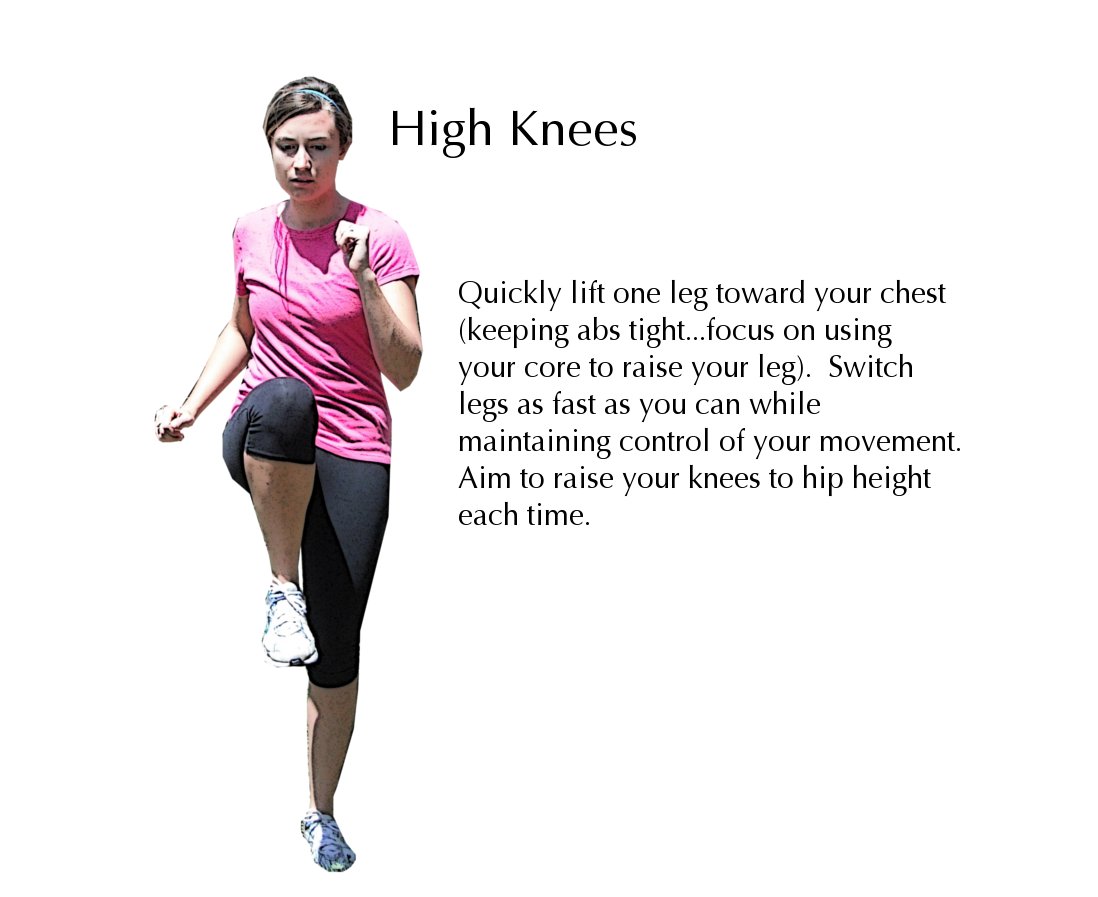High knees are a popular exercise among athletes and fitness enthusiasts. This high-impact exercise is known for its ability to burn calories and improve cardiovascular fitness. But what muscles does it work? In this article, we explore the muscles involved in high knees and how to perform this exercise properly.
The Muscles Involved in High Knees

High knees are a great way to strengthen and tone your lower body muscles, including your quadriceps, hamstrings, glutes, and calves. This exercise also engages your core muscles, including your rectus abdominis, transverse abdominis, and obliques.
The quadriceps are the large muscles on the front of your thighs. They are responsible for straightening your leg at the knee joint. The hamstrings are the muscles on the back of your thighs. They are responsible for bending your leg at the knee joint. Together, these muscles help you perform the kicking motion of high knees.
The glutes are the muscles in your buttocks. They are responsible for hip extension and rotation. When you perform high knees, your glutes help to stabilize your hips and maintain proper form.
The calves are the muscles on the back of your lower legs. They are responsible for plantarflexion, which is the movement of pointing your toes downward. When you perform high knees, your calves help to lift your knees and improve your overall balance.
Your core muscles are also engaged during high knees. These muscles help to stabilize your spine and maintain proper posture. The rectus abdominis is the muscle that runs down the front of your abdomen. It is responsible for flexing your trunk. The transverse abdominis is the muscle that runs across your abdomen. It is responsible for stabilizing your spine. The obliques are the muscles on the sides of your abdomen. They are responsible for rotating your trunk.
How to Perform High Knees

To perform high knees, follow these steps:
- Stand with your feet hip-width apart and your arms at your sides.
- Lift your right knee up towards your chest while simultaneously lifting your left arm up.
- Lower your right foot back down to the ground and switch sides, lifting your left knee up towards your chest while simultaneously lifting your right arm up.
- Continue alternating legs and arms for the desired number of repetitions.
When performing high knees, it is important to maintain proper form. Keep your core engaged and your back straight. Land softly on the balls of your feet to reduce impact on your joints.
Variations of High Knees

There are several variations of high knees that you can try to add variety to your workout:
- High knees with a jump: Instead of lifting your knees up one at a time, jump off the ground and bring your knees up to your chest.
- High knees with a twist: As you lift your knee up towards your chest, twist your torso towards that knee.
- High knees with a lateral shuffle: Instead of standing in one place, shuffle to the side as you lift your knees up towards your chest.
Benefits of High Knees

High knees offer several benefits for your overall health and fitness:
- Cardiovascular fitness: High knees are a high-impact exercise that can help improve your cardiovascular fitness and burn calories.
- Lower body strength: High knees are an effective way to strengthen and tone your lower body muscles.
- Core strength: High knees engage your core muscles, helping to improve your overall strength and stability.
- Balance and coordination: High knees require balance and coordination, making them a great exercise for improving these skills.
Conclusion
High knees are a great exercise for improving your cardiovascular fitness, strengthening and toning your lower body muscles, and engaging your core muscles. They are also a fun and challenging exercise that can be done anywhere with no equipment needed. Try adding high knees to your workout routine to reap the many benefits they offer.